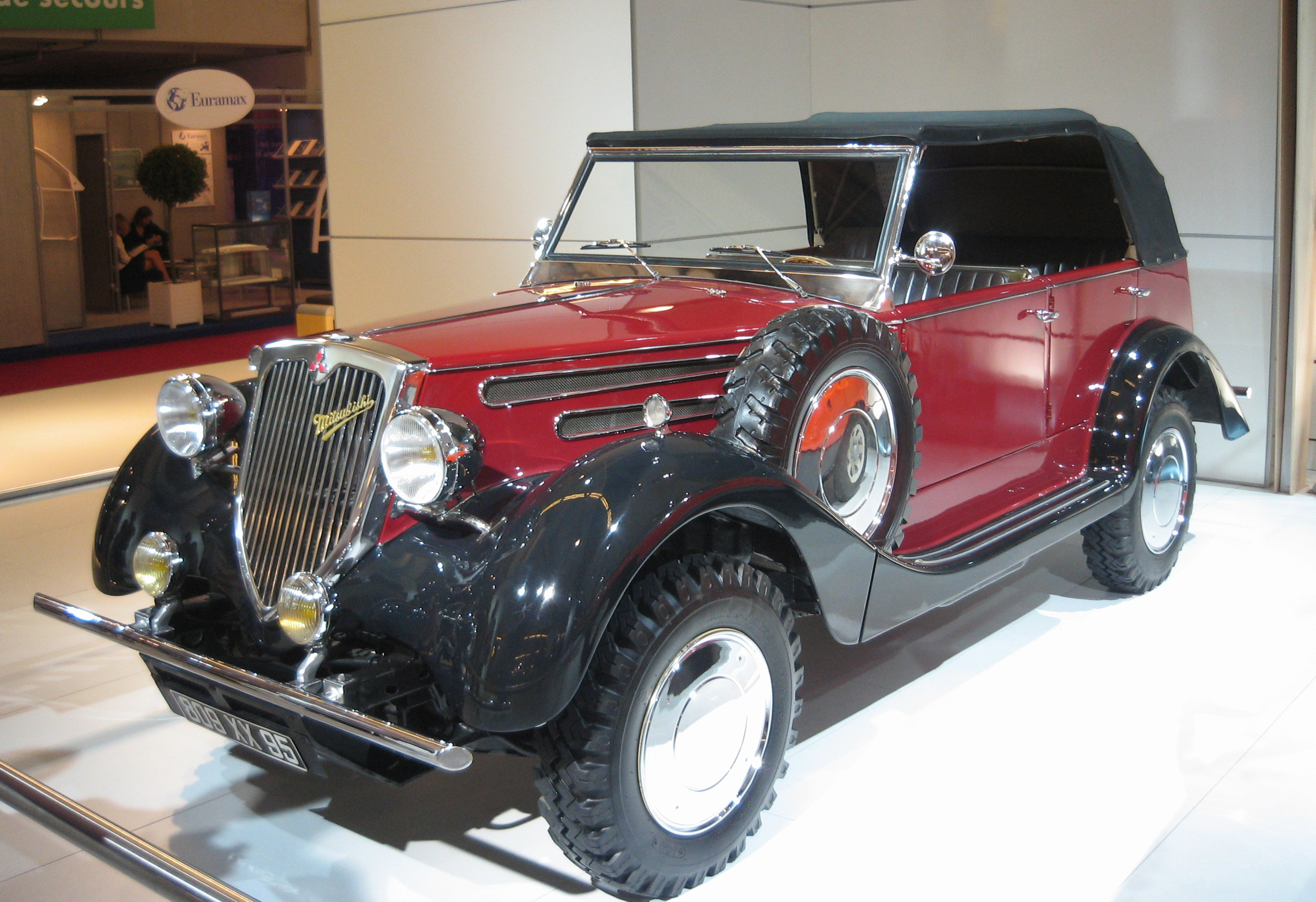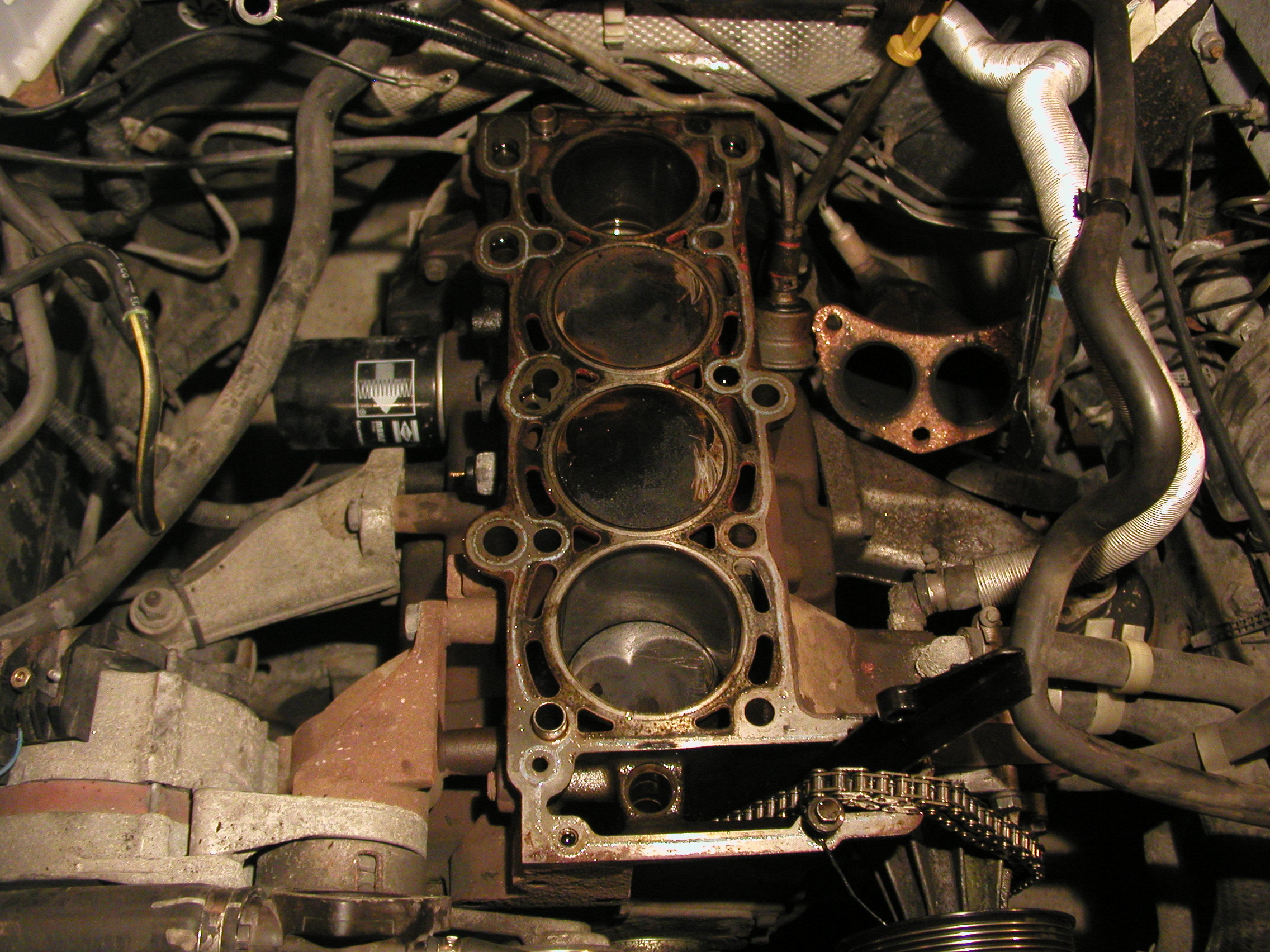|
Mitsubishi GS Platform
The GS platform (also known as "Project Global" by Mitsubishi) is a compact car platform co-developed and shared by Mitsubishi Motors and DaimlerChrysler. History After dissolution of the DaimlerChrysler / Mitsubishi partnership in 2004, DaimlerChrysler made substantial changes to the platform subsequently naming it the JS platform for mid-size cars and PM/MK for compact cars. Mitsubishi's GS vehicles are manufactured in Japan with the exception of the RVR/Outlander Sport, which was manufactured at the former Diamond-Star Motors plant in Normal, Illinois, USA. Mitsubishi's first GS platform car was the 2005 Mitsubishi Outlander crossover SUV. PM/MK vehicles from Chrysler are assembled at Belvidere Assembly in Belvidere, Illinois (Dodge Caliber and Jeep Compass) and JS Vehicles were produced at the Sterling Heights Assembly (Chrysler 200 and Dodge Avenger). Chrysler said the 200's predecessor, the Chrysler Sebring, and Avenger did not use the GS platform, though that was t ... [...More Info...] [...Related Items...] OR: [Wikipedia] [Google] [Baidu] |
Mitsubishi Motors
is a Japanese multinational automobile manufacturer headquartered in Minato, Tokyo, Japan.Corporate Profile , Mitsubishi Motors website, 19 June 2008 In 2011, Mitsubishi Motors was the sixth-largest Japanese automaker and the 19th-largest worldwide by production. Since October 2016, Mitsubishi has been one-third (34%) owned by Nissan, thus a part of the Renault–Nissan–Mitsubishi Alliance. Besides being part of the Renault–Nissan–Mitsubishi Alliance, it is also a part of [...More Info...] [...Related Items...] OR: [Wikipedia] [Google] [Baidu] |
Four-wheel Drive
Four-wheel drive, also called 4×4 ("four by four") or 4WD, refers to a two-axled vehicle drivetrain capable of providing torque to all of its wheels simultaneously. It may be full-time or on-demand, and is typically linked via a transfer case providing an additional output drive shaft and, in many instances, additional gear ranges. A four-wheel drive vehicle with torque supplied to both axles is described as "all-wheel drive" (AWD). However, "four-wheel drive" typically refers to a set of specific components and functions, and intended off-road application, which generally complies with modern use of the terminology. Definitions Four-wheel-drive systems were developed in many different markets and used in many different vehicle platforms. There is no universally accepted set of terminology that describes the various architectures and functions. The terms used by various manufacturers often reflect marketing rather than engineering considerations or significant technical d ... [...More Info...] [...Related Items...] OR: [Wikipedia] [Google] [Baidu] |
Chrysler LH Engine
The LH engine was a series of V6 engines developed by Chrysler Corporation for its LH platform cars. It is a 60- degree V6 designed for front-wheel drive applications, later adapted to rear-wheel drive ones. The 2.7 liter LH engine is based on the SOHC 3.5 L engine, though bore spacing, cylinder bore, stroke, and assembly site are different. 2.7 L The EER version debuted in 1998 and is built in Kenosha, Wisconsin. It is a DOHC 24-valve design. Bore and stroke is . It is an aluminum block with cast-iron cylinder liners and aluminum heads. Output has varied depending on the application but typical was at 5800 rpm with of torque at 4850 rpm. In terms of emissions, this was a TLEV engine; it runs on regular-octane (87) gasoline. Compression when launched in 1998 was 9.7:1 (increased to 9.9:1 in the LX cars). Redline occurred at 6,464 rpm, originally; and at 6,600 rpm as revised for the LX. The 24 valves are actuated by hydraulic end-pivot roller fo ... [...More Info...] [...Related Items...] OR: [Wikipedia] [Google] [Baidu] |
V6 Engine
A V6 engine is a six-cylinder piston engine where the cylinders share a common crankshaft and are arranged in a V configuration. The first V6 engines were designed and produced independently by Marmon Motor Car Company, Deutz Gasmotoren Fabrik and Delahaye. Engines built after World War II include the Lancia V6 engine in 1950 for the Lancia Aurelia, and the Buick V6 engine in 1962 for the Buick Special. The V6 layout has become the most common layout for six-cylinder automotive engines. Design Due to their short length, V6 engines are often used as the larger engine option for vehicles which are otherwise produced with inline-four engines, especially in transverse engine vehicles. A downside for luxury cars is that V6 engines produce more vibrations than straight-six engines. Some sports cars use flat-six engines instead of V6 engines, due to their lower centre of gravity (which improves the handling). The displacement of modern V6 engines is typically between , t ... [...More Info...] [...Related Items...] OR: [Wikipedia] [Google] [Baidu] |
Mitsubishi 6B3 Engine
The Mitsubishi 6B3 engine is a range of all-alloy piston V6 engines developed by Mitsubishi Motors. Currently, only one engine has been developed, a V6 first introduced in the North American version of the second generation Mitsubishi Outlander which debuted in October 2006."2007 Mitsubishi Outlander Debuts New-Generation V-6 Engine And Segment-Exclusive Six-Speed Sportronic(R) Transmission" , Mitsubishi Motors North America press release"Newly Developed V6 MIVEC Gasoline Engine" , Setsuo NISHIHA ... [...More Info...] [...Related Items...] OR: [Wikipedia] [Google] [Baidu] |
PSA EW/DW Engine
The PSA EW/DW engine is a family of straight-4 black-top automobile engines manufactured by the PSA Group for use in their Peugeot and Citroën automobiles. The EW/DW family was introduced in 1998 as a replacement for the XU engine. All DW engines are produced as part of a joint-venture with Ford Motor Company. The EW/DW uses many parts from the XU, most notably the crankshaft, but is built with lighter materials. The EW name is used for the petrol engines ("e" for '' essence'') and DW for Diesel engines. All EWs are DOHC multivalve with displacement from . They are mainly used for large family cars and executive cars, as well as large MPVs, although the 2.0 L is also used for some hot hatch models. The DW started with an SOHC 2-valve design between , later receiving DOHC and four valves per cylinder upon the introduction of the 2.2 L in 2000 with the Citroën C5 and Peugeot 607. Turbocharged versions started using common rail and received the commercial designation ... [...More Info...] [...Related Items...] OR: [Wikipedia] [Google] [Baidu] |
Mitsubishi 4A9 Engine
The Mitsubishi 4A9 engine is the newest family range of all-alloy inline four-cylinder engines from Mitsubishi Motors, introduced in the 2004 version of their Mitsubishi Colt supermini, and built by DaimlerChrysler-owned MDC Power in Germany (previously a joint venture)."Newly Developed Compact, Aluminum Gasoline Engine" , Mitsubishi Motors technical review The engine project was begun as a joint effort by Mitsubishi Motors and DaimlerChrysler (DCX), with Mitsubishi handling the development of the engines and MDC Power GmbH, a company previously jointly established by Mitsubishi and DCX, handling production. The 4A9 is Mitsubishi's first four-cylinder engine family to adopt a high-pressure die-cast aluminum block. [...More Info...] [...Related Items...] OR: [Wikipedia] [Google] [Baidu] |
Inline-4
A straight-four engine (also called an inline-four) is a four-cylinder piston engine where cylinders are arranged in a line along a common crankshaft. The vast majority of automotive four-cylinder engines use a straight-four layout (with the exceptions of the flat-four engines produced by Subaru and Porsche) and the layout is also very common in motorcycles and other machinery. Therefore the term "four-cylinder engine" is usually synonymous with straight-four engines. When a straight-four engine is installed at an inclined angle (instead of with the cylinders oriented vertically), it is sometimes called a slant-four. Between 2005 and 2008, the proportion of new vehicles sold in the United States with four-cylinder engines rose from 30% to 47%. By the 2020 model year, the share for light-duty vehicles had risen to 59%. Design A four-stroke straight-four engine always has a cylinder on its power stroke, unlike engines with fewer cylinders where there is no power stroke occurr ... [...More Info...] [...Related Items...] OR: [Wikipedia] [Google] [Baidu] |
Mitsubishi 4B1 Engine
The is a group of autonomous Japanese multinational companies in a variety of industries. Founded by Yatarō Iwasaki in 1870, the Mitsubishi Group historically descended from the Mitsubishi zaibatsu, a unified company which existed from 1870 to 1946. The company was disbanded during the occupation of Japan following World War II. The former constituents of the company continue to share the Mitsubishi brand and trademark. Although the group of companies participate in limited business cooperation, most famously through monthly "Friday Conference" executive meetings, they are formally independent and are not under common control. The four main companies in the group are MUFG Bank (the largest bank in Japan), Mitsubishi Corporation (a general trading company), Mitsubishi Electric and Mitsubishi Heavy Industries (both diversified manufacturing companies). History The Mitsubishi company was established as a shipping firm by Iwasaki Yatarō (1834–1885) in 1870 under the name ... [...More Info...] [...Related Items...] OR: [Wikipedia] [Google] [Baidu] |
Inline-4
A straight-four engine (also called an inline-four) is a four-cylinder piston engine where cylinders are arranged in a line along a common crankshaft. The vast majority of automotive four-cylinder engines use a straight-four layout (with the exceptions of the flat-four engines produced by Subaru and Porsche) and the layout is also very common in motorcycles and other machinery. Therefore the term "four-cylinder engine" is usually synonymous with straight-four engines. When a straight-four engine is installed at an inclined angle (instead of with the cylinders oriented vertically), it is sometimes called a slant-four. Between 2005 and 2008, the proportion of new vehicles sold in the United States with four-cylinder engines rose from 30% to 47%. By the 2020 model year, the share for light-duty vehicles had risen to 59%. Design A four-stroke straight-four engine always has a cylinder on its power stroke, unlike engines with fewer cylinders where there is no power stroke occurr ... [...More Info...] [...Related Items...] OR: [Wikipedia] [Google] [Baidu] |
Global Engine Manufacturing Alliance
Global Engine Alliance LLC, began as a joint venture of Chrysler, Mitsubishi Motors, and Hyundai Motor Company for developing a line of shared engines. In September 2009, Chrysler purchased Mitsubishi and Hyundai's shares, after 5 years of allied research and development, making its Dundee, Michigan plant a wholly owned subsidiary of what was then Chrysler Group LLC."GEMA takes off: although some people think that the only place to build new manufacturing plants in the U.S. is in the southern states, a team of global companies has constructed one of the most flexible power ... [...More Info...] [...Related Items...] OR: [Wikipedia] [Google] [Baidu] |
Minivan
Minivan (sometimes called simply as van) is a North American car classification for vehicles designed to transport passengers in the rear seating row(s), with reconfigurable seats in two or three rows. The equivalent classification in Europe is MPV (multi purpose vehicle). Minivans often have a 'one-box' or 'two-box' Car body configurations, body configuration, a higher roof, a flat floor, sliding doors for rear passengers, and high H-point seating. Minivan was also equivalent in Southeast Asia as the Asian Utility Vehicle (AUV). Compared with a full-size van, most minivans are based on a passenger car platform and have a lower body. Early models such as the Ford Aerostar and Chevrolet Astro utilized a compact pickup truck platform. The largest size of minivans is also referred to as 'Large MPV' and became popular following the introduction of the 1984 Dodge Caravan and Renault Espace. Typically, these have platforms derived from D-segment passenger cars or compact pickups. Sin ... [...More Info...] [...Related Items...] OR: [Wikipedia] [Google] [Baidu] |







